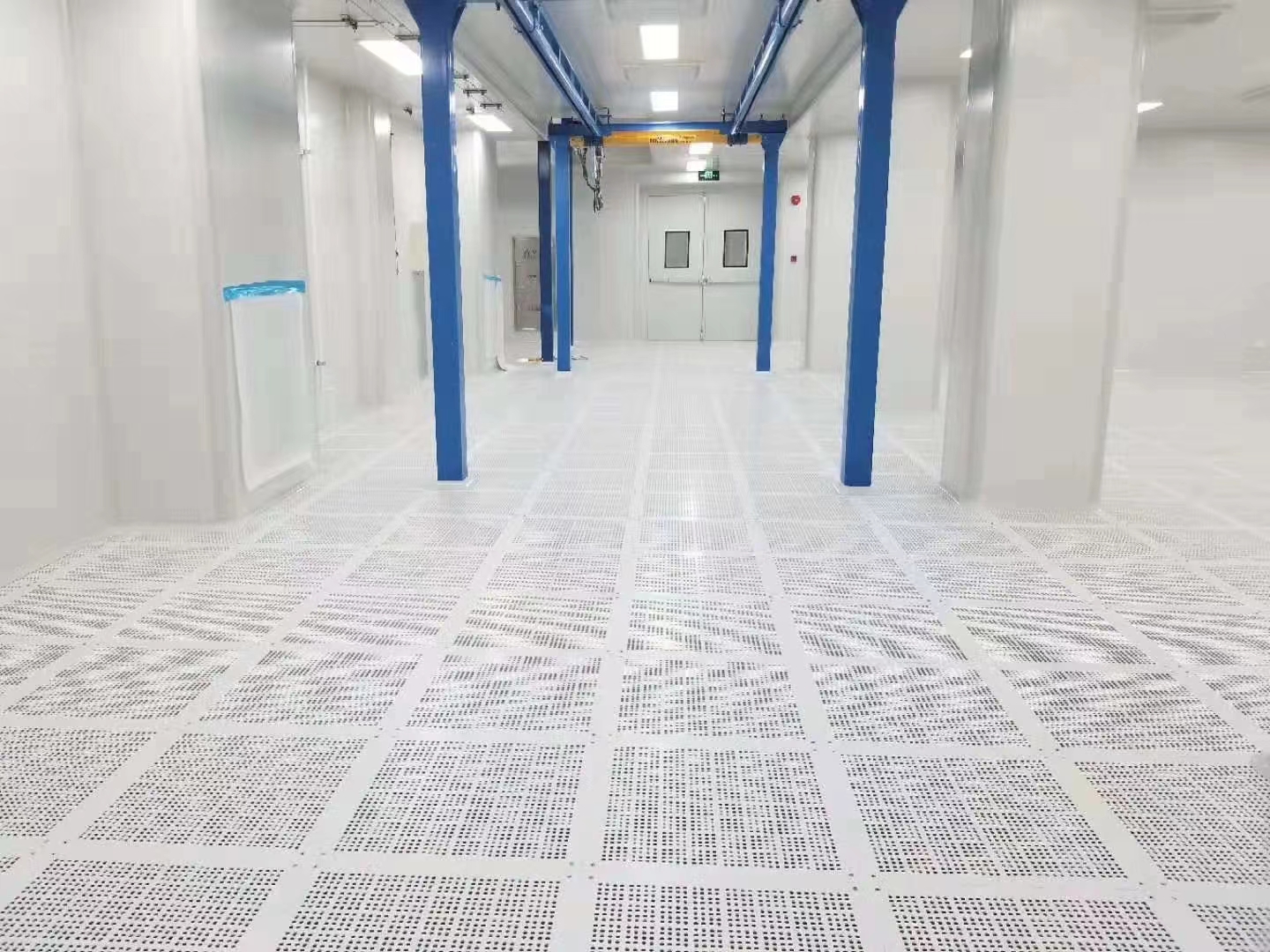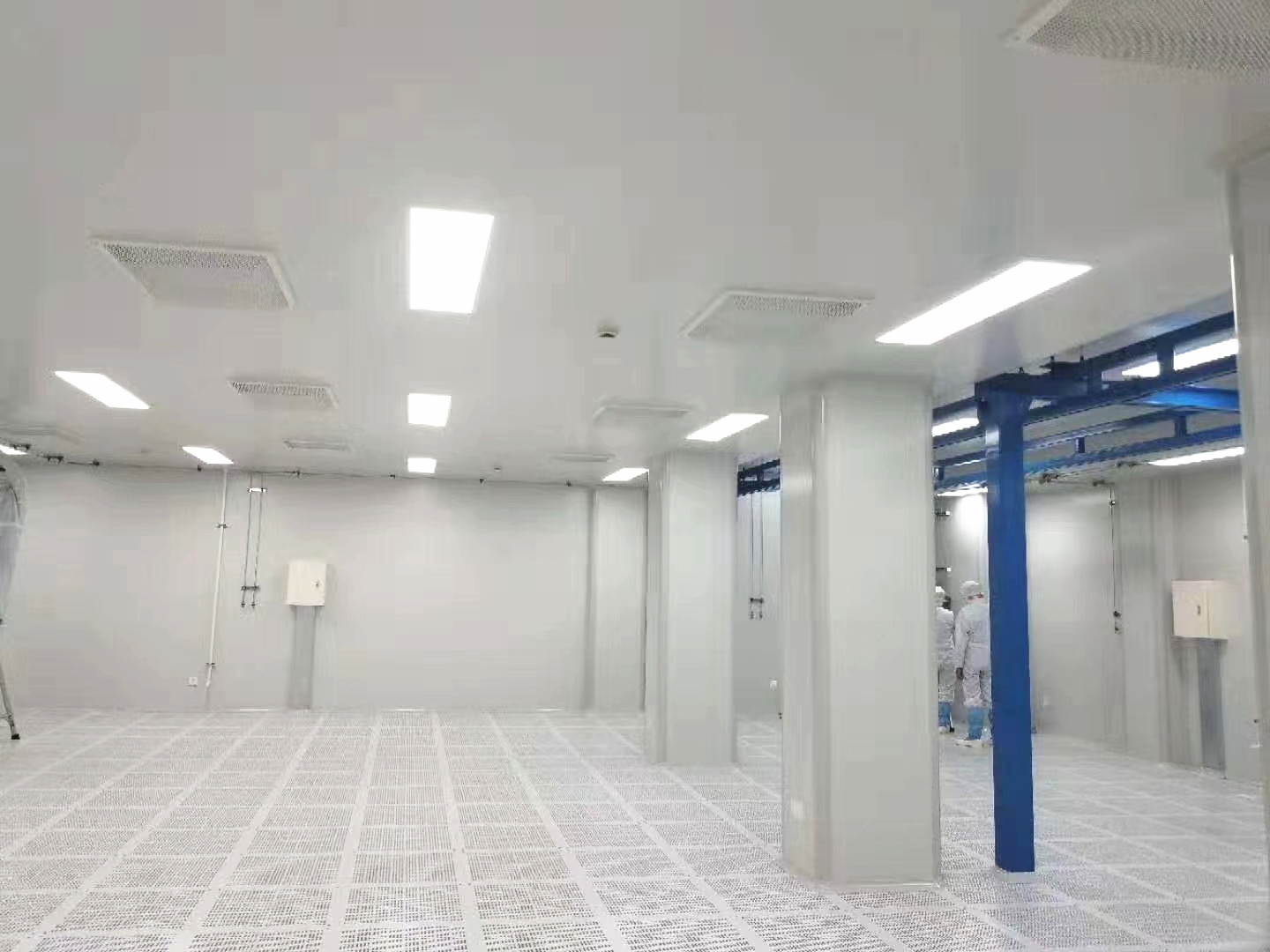

The chip yield in chip manufacturing industry is closely related to the size and number of air particles deposited on chip. Good air flow organization can take particles generated from dust sources away from clean room and ensure the cleanliness of the cleanroom. That is, the air flow organization in cleanroom plays a vital role in the yield of chip production. The goals to be achieved in the design of clean room air flow organization are: to reduce or eliminate eddy currents in flow field to avoid retention of harmful particles; to maintain an appropriate positive pressure gradient to prevent cross-contamination.
According to the clean room principle, the forces acting on particles include mass force, molecular force, attraction between particles, air flow force, etc.
Airflow force: refers to the force of airflow caused by supply and return airflow, thermal convection airflow, artificial agitation, and other airflows with a certain flow rate to carry particles. For clean room environmental technology control, air flow force is the most important factor.
Experiments have shown that in airflow movement, particles follow the airflow at almost exactly the same speed. The condition of particles in air is determined by the airflow distribution. The main effects of airflow on indoor particles include: air supply airflow (including primary airflow and secondary airflow), airflow and thermal convection airflow caused by people walking, and the impact of airflow on particles caused by process operations and industrial equipment. Different air supply methods, speed interfaces, operators and industrial equipment, induced phenomena, etc in cleanrooms are all factors that affect the cleanliness level.
1. Influence of air supply method
(1) Air supply speed
In order to ensure uniform air flow, the air supply speed in the unidirectional flow clean room must be uniform; the dead zone on the air supply surface must be small; and the pressure drop within hepa filter must also be uniform.
The air supply speed is uniform: that is, the unevenness of the air flow is controlled within ±20%.
There is less dead space on the air supply surface: not only should the plane area of the hepa frame be reduced, but more importantly, modular FFU should be used to simplify the redundant frame.
In order to ensure that the air flow is vertical and unidirectional, the pressure drop selection of the filter is also very important, and it is required that the pressure loss within the filter cannot be biased.
(2) Comparison between FFU system and axial flow fan system
FFU is an air supply unit with a fan and hepa filter. The air is sucked in by the centrifugal fan of the FFU and converts the dynamic pressure into static pressure in the air duct. It is blown out evenly by hepa filter. The air supply pressure on the ceiling is negative pressure. This way no dust will leak into clean room when replacing the filter. Experiments have shown that the FFU system is superior to the axial flow fan system in terms of air outlet uniformity, air flow parallelism and ventilation efficiency index. This is because the air flow parallelism of the FFU system is better. The use of the FFU system can improve the air flow organization in clean room.
(3) Influence of FFU’s own structure
FFU is mainly composed of fans, filters, air flow guides and other components. The hepa filter is the most important guarantee for clean room to achieve the required cleanliness required by design. The material of the filter will also affect the uniformity of the flow field. When a rough filter material or a flow plate is added to the filter outlet, the outlet flow field can be easily made uniform.
2. Impact of speed interface with different cleanliness
In the same clean room, between the working area and the non-working area with vertical unidirectional flow, due to the difference in air speed at the hepa box, a mixed vortex effect will occur at the interface, and this interface will become a turbulent airflow zone. The intensity of air turbulence is particularly strong, and particles may be transmitted to the surface of the equipment machine and contaminate the equipment and wafers.
3. Impact on staff and equipment
When clean room is empty, the air flow characteristics in room generally meet the design requirements. Once equipment enters cleanroom, people move, and products are transported, there are inevitably obstacles to the air flow organization, such as sharp points protruding from the equipment machine. At the corners or edges, the gas will divert to form a turbulent flow area, and the fluid in the area will not be easily carried away by the incoming gas, thus causing pollution.
At the same time, the surface of the mechanical equipment will be heated due to continuous operation, and the temperature gradient will cause a reflow area near the machine, which increases the accumulation of particles in reflow area. At the same time, the high temperature will easily cause the particles to escape. The dual effect intensifies the overall vertical layer. The difficulty of controlling stream cleanliness. Dust from operators in clean room can easily adhere to wafers in these reflow areas.
4. Influence of return air floor
When the resistance of the return air passing through the floor is different, the pressure difference will occur, causing air to flow in the direction of small resistance, and uniform air flow will not be obtained. The current popular design method is to use an elevated floor. When the opening ratio of the elevated floor is at 10%, the air flow velocity can be evenly distributed at the indoor working height. In addition, strict attention should be paid to cleaning work to reduce the source of pollution on the floor.
5. Induction phenomenon
The so-called induction phenomenon refers to the phenomenon of generating airflow in the opposite direction to the uniform flow, inducing dust generated in room or dust in adjacent contaminated areas to the upwind side, thereby causing the dust to contaminate the wafer. Possible induced phenomena include the following:
(1) Blind plate
In a clean room with vertical one-way flow, due to the joints on the wall, there are generally large blind panels that will produce turbulent flow and local backflow.
(2) Lamps
Lighting fixtures in clean room will have a greater impact. Since the heat of the fluorescent lamp causes the airflow to rise, the fluorescent lamp will not become a turbulent area. Generally, the lamps in clean room are designed in a teardrop shape to reduce the impact of the lamps on airflow organization.
(3) Gaps between walls
When there are gaps between partition walls or ceilings with different cleanliness requirements, dust from areas with low cleanliness requirements can be transferred to adjacent areas with high cleanliness requirements.
(4) The distance between the mechanical equipment and the floor or wall
If the gap between the mechanical equipment and the floor or wall is small, rebound turbulence will occur. Therefore, leave a gap between the equipment and the wall and raise the machine platform to avoid direct contact with the ground.
Post time: Nov-02-2023

